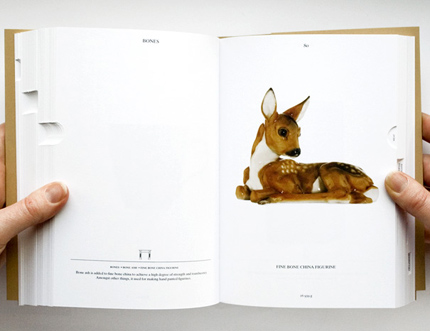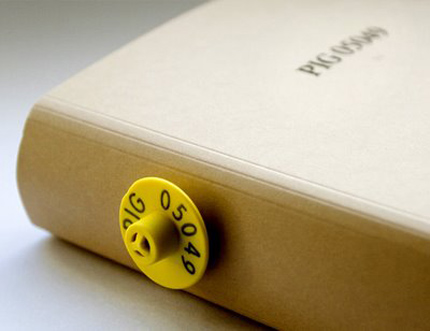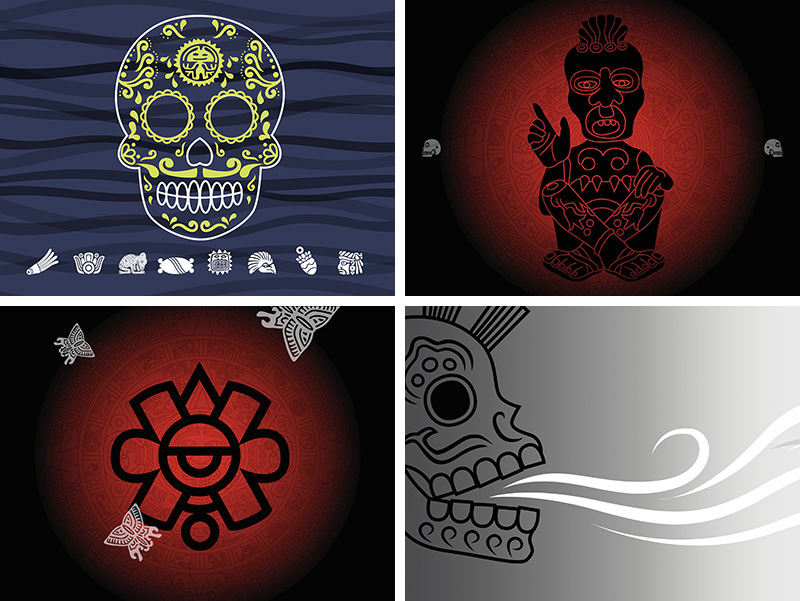
September 9, 2009
Pig 05049

Pig 05049 documents 185 products made from a single swine…
The pork chops sit in the refrigerated case in the supermarket, snuggled on their white Styrofoam trays, glistening under taut clear plastic. We know (though we try not to think about it) that those chops, along with the bacon and ham on display nearby, originated with hogs that were slaughtered. But when Dutch designer Christien Meindertsma traced what happened to the body parts of a specific commercially raised pig, she discovered a lot more than packaged meat. That single animal, Meindertsma found, contributed to a mind-boggling number of products — 185 items in all, from chewing gum to bone china. The book Meindertsma created to impart her findings, Pig 05049, won a 2009 Index award in the Playful Learning category — the first time the Danish nonprofit organization has singled out a communication design for one of its coveted prizes.
Meindertsma, a 29-year-old graduate of Design Academy Eindhoven and a resident of Rotterdam, says the idea for her project sprang from her interest in raw materials. She’d been working on a line of sweaters knitted from sheep’s wool and started to wonder about the many things made from a single cow. After doing preliminary research, she realized that investigating the products derived from a pig might be more intriguing.
She zeroed in on a random pig, one owned by a farmer she knew. Although Meindertsma wasn’t able to actually visit the animal — a quarantine was in effect at the time due to an outbreak of a swine disease in the U.K. — the farmer agreed to photograph her subject and its yellow plastic ear tag stamped with its identification number, 05049. Over three years, Meindertsma connected the dots from her pig to a Netherlands company that handles all of the country’s dead animals, to the smaller companies that process animal remains, and then to 185 distinct end products.
Not surprisingly, much of the pig was bound for the table in the familiar forms of meat. In addition, calcium from the bones was used to fortify yogurt. The pig’s nose, after being deep-fried, became a dog snack.
What is surprising is the staggering array of non-food products that incorporate parts of the pig. Who knew it took pig fat to make automobile paint? Or that hemoglobin from pig blood is used in cigarette filters? Bone ash, Meindertsma found, went into train brakes, bone meal into the coating for aluminum molds, and gelatin from the pig’s skin and bones was deployed by an American weapons manufacturer to help distribute powder to bullets. In a video documenting the project, John Heskett, Chair Professor of Design at Hong Kong Polytechnic and one of the Index judges, called it “absolutely astonishing … how the products derived from one pig permeate an immense range of activities.”

…including bone china
When it came to presenting her findings, Meindertsma did not get on a soapbox. There is something undeniably horrifying in how the pig’s body parts are flung far and wide and put to uses over which the innocent animal had no say, and certainly the designer is convinced that most commercial pig farms are “not super-happy places.” But Pig 05049 is neutral in tone, allowing readers themselves to make connections and formulate opinions.
The book, the size of a pocket bible, has a workmanlike cover of plain brown cardboard (a special limited edition is bound in pigskin). A yellow ear tag printed with the pig’s ID number — identical to the one the animal wore — is fastened to the spine. On white pages inside, information is conveyed graphically — with color photographs of the pig products, textbook-like charts and lists and a diagram of a pig in profile spattered with numbers corresponding to the numbered products. So far, 5,000 copies of the book — now in its third printing — have been sold (it is available on Amazon.com for $61). The designer believes that the book’s lack of preachiness has contributed to its success: “A pig farmer would buy it, an environmentalist would buy it, the company that does pig products would buy it.”

A yellow ear tag printed with the pig’s ID number is fastened to the book’s spine
Meindertsma, who also has a line of sheep’s-wool poufs and a rope lamp made from flax grown in the Netherlands, says the swine project has deepened her awareness of material sourcing — she is now getting her sweater wool locally, rather than from New Zealand, for example. Nor has the designer left pigs completely behind. Currently she is working on a collection of coloring books, each devoted to a different kind of farm. A pig farm is the first subject in her series; a tomato farm is next. Meindertsma hopes that these new designs will do what Pig 05049 has already accomplished: encourage consumers, in a world in which so much is packaged, to think about where our goods come from, with the ultimate goal that “we care for and use our resources wisely.”
Observed
View all
Observed
By Jane Margolies
Recent Posts
Food branding without borders: chai, culture, and the politics of packaging Why scaling back on equity is more than risky — it’s economically irresponsible Beauty queenpin: ‘Deli Boys’ makeup head Nesrin Ismail on cosmetics as masks and mirrors Compassionate Design, Career Advice and Leaving 18F with Designer Ethan Marcotte
 Jane Margolies, a writer and editor based in New York, reports on design, travel, books and trends for magazines and
Jane Margolies, a writer and editor based in New York, reports on design, travel, books and trends for magazines and 

